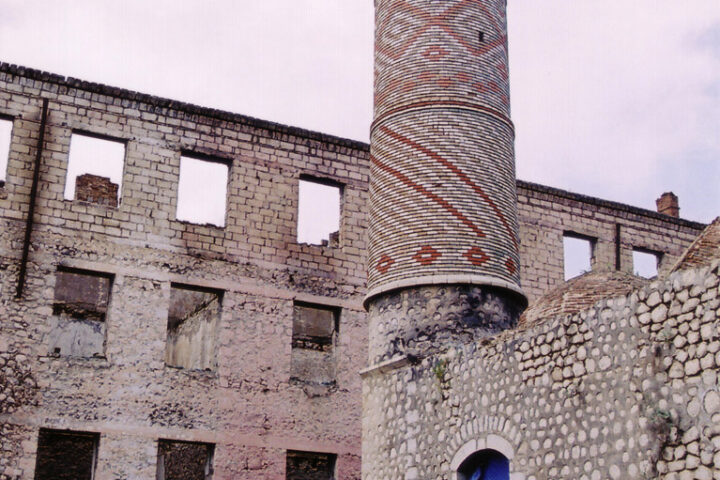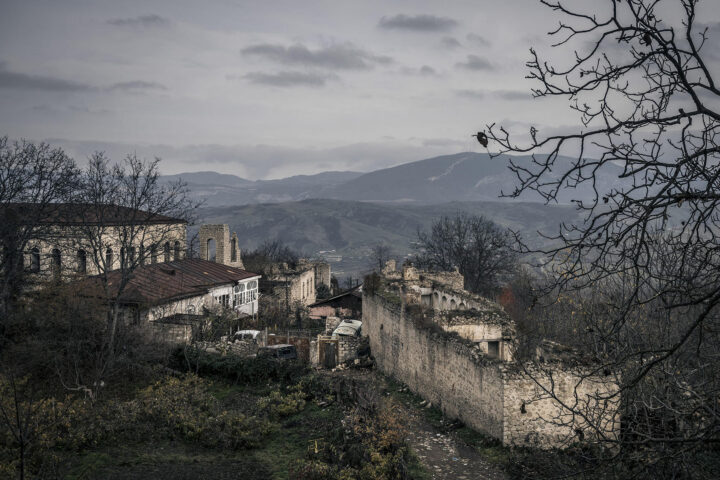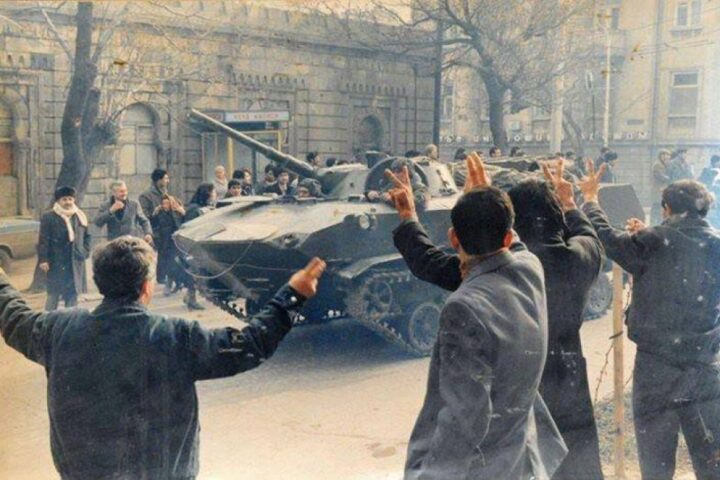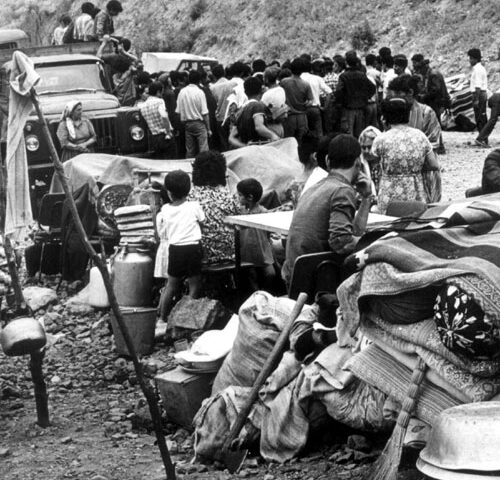The facts collected by the State Commission for Prisoners of War, Hostages, and Missing Persons prove that the Armenian Republic tramples on the norms of international law, violating the 1949 Geneva Convention “On protection of war victims”, by killing, crippling, torturing, and psychologically damaging captured Azerbaijani citizens.
For example, during the military aggression of Armenia against Azerbaijan, there was a mass execution of the peaceful populace. Azerbaijani citizens held in captivity in Armenia and the occupied territories of Azerbaijan are subject to horrible tortures and psychological damage. Many were driven to suicide through cruel treatment and psychological torture. Others were executed or tortured to death.
Document specific cases
During the occupation of the Khojavend district on 17 February 1992, Armenian armed forces executed on the spot 80 of 117 hostages taken in Garadagli village. Village residents Seyyur Khanlar ogly Nagiev, Shakhruz Amirkhan ogly Aliyev, and others personally witnessed this.
Hagigat Yusif gizi Huseynova, a resident of Garadagli village, witnessed 10 of her compatriots burnt to death on 10 February 1992.
During a large-scale attack of Armenian armed forces on Kelbadjar district of Azerbaijan begun 1 April 1993, an urgent order was transmitted from the main radio station GSM-7 in the Vardenis district of Armenia to the main radio station in Kelbadjar and all mobile radio stations. The order demanded the immediate elimination of captured Azerbaijani citizens, including women, children, and the elderly. The reason for haste was to hide the evidence of atrocities committed against Azerbaijanis from an international delegation and journalists visiting the region. The text of this radio transmission was recorded by the radio counterintelligence department of the Azerbaijan Ministry of National Security on 6-7 April 1993.
During the occupation of the Kelbadjar district, 15 residents of Bashlibel village, including Mukhammed Amraliyev, Surkhay Amraliyev, Chingiz Amraliyev, Aygun Amraliyeva, Busat Ahmadova, and Chichek Hasanova, were executed on the spot. Khasay Mukhammed ogly Amraliyev and Binnet Abdulali ogly Ahmadov witnessed this atrocity.
According to the testimony of Imarat Mamishova, who was held captive along with her two young sons, Armenians shot and burnt the bodies of eight civilians including her eight-year-old son Taleh in her presence. Afterwards, the Armenians took her, her ten-year-old son Yadigar, and other women, children and elderly people to Khankendi and subjected them to horrible torture.
According to the testimony of the Ahmadovs, who witnessed the events and were subsequently freed from Armenian captivity in 1994, on 17 August 1993, the Armenians executed 25 residents of Gajar Village in the Fuzuli district of Azerbaijan.
Hasan Mejid ogly Huseynov, who was held in Armenian captivity, said that about 40 residents were killed along the Horadiz-Fuzuli highway in 1993.
On 16 February 1994, the Armenian Ministry of Foreign Affairs announced that eight Azerbaijani prisoners of war were killed while attempting to escape from prison. During a medical examination of the bodies in Baku, Professor Derrick Pounder, a member of International Academy Presidium of juridical and social medicine and is also a member of British organization “Physicians for human rights”, declared that the Azerbaijani POWs had been executed using the same pistol shot at a short distance from the temple and rejected the notion that they had been killed while trying to escape.
After being freed from captivity, Niyaz Balay ogly Zeynalov said that on 11 February 1992, the Armenians executed by burning the following residents of Gushchular village of the Shusha district: Sariya Tagi gizi Zeynalova (born 1910), Yegana Dadash gizi Madatova (born 1920), and Movsum Abdulrahim ogly Ahmadov.
The 61-year-old former hostage Budag Ali ogly Alishanov witnessed five Azerbaijanis used as slaves for hard physical labor and then killed in Drmbon village in Nagorno-Karabakh.
Former hostage Ismail Sarif ogly Ismailov said that the Armenians beheaded three Azerbaijani hostages on an Armenian grave.
Lachin district resident Samaya Karimova could not withstand the torture of her and her two-year-old daughter Nurlana and committed suicide in captivity.
Talekh Madat ogly Ibishov, born in 1977, was taken hostage with his family during the occupation of the Lachin district on 18 May 1992. The Armenians ruthlessly murdered his father Madat Avaz ogly Ibishov and sister, Yegana Madat gizi Ibishova, born in 1967.
Ilham Nasirov, born in 1973, died from hunger on 23 November 1993 in a military hospital in Yerevan.
A medical examination of the remains of twenty-year-old Farhad Rahman ogly Atakishiyev proved that he was executed by regular beatings and other tortures.
On 24 December 1994, Yardimli district resident Heydar Heydarov died in Shusha prison because of Armenian torture. Former hostages Habib Aliyev, Avaz Mukhtarov, Abulfat Gasimov, and others witnessed it.
According to the testimony of Abuzar Manafov, H. Huseynov, and Aydin Maharramov, on 14 February 1994 in Shusha prison, guards “Kolya”, “Slavik” and “Gor” killed Beilagan resident Ilgar Anver ogly Gurbanov by torturing him.
Shamkir district resident Fikrat Hasan ogly Huseynov died in Armenian captivity on 18 June 1993 due to torture and regular beatings. Former captives Bakhtiyar Ibrahim ogly Taghiyev and Matlab Shiraslan ogly Allahverdiyev are witnesses to this fact. A medical examination of Huseynov’s body carried out in Baku discovered a rib break in his body.
According to the testimony of Zohrab Nadir ogly Heydarov, on 21 May 1993, Zahid Nasibulla ogly Amrullayev, born in 1973, was killed by strangulation by Armenian guards in Shusha prison.
Former hostage Mashallah Bandaliyev said that he was held in a garage in Khankendi in May 1992. The garage owners, “Mero” and Vazgen Sarkisyan, tortured and then beheaded one hostage, whose name he didn’t know.







